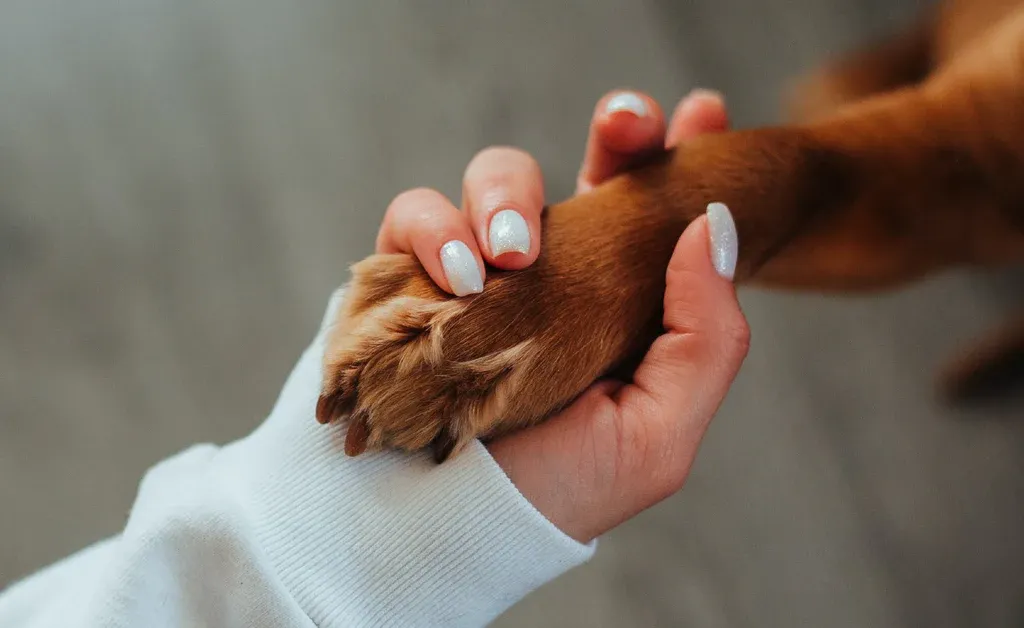Are you looking for effective ways to build trust with an abused dog? Keep reading to learn the effective ways you can use to build trust with an abused dog.

Welcoming an abused dog into your home is a noble but delicate task that requires patience, empathy, and understanding.
The way to build trust with an abused dog is not just a guide; it’s a testament to the transformative power of compassion and dedication.
This article outlines eight effective strategies to help you build a foundation of trust with your new canine companion who may have a history of abuse.
Ways to Build Trust With an Abused Dog

Here are effective ways to build trust with an abused dog:
1. Create a Safe Environment for the Abused Dog
Building trust begins with providing a safe haven for your abused dog.
Designate a quiet and comfortable space with soft bedding, away from excessive noise and disruptions.
In addition, this space becomes their sanctuary, fostering a sense of security and allowing them to gradually let their guard down.
2. Engage in Gentle and Consistent Interactions
Approach the abused dog with gentleness and consistency.
Furthermore, abused dogs may be wary of sudden movements and loud noises.
Approach them calmly, using slow and deliberate movements.
Also, consistency is crucial; repetitive gentle interactions help your dog understand that you are a predictable and non-threatening presence.
Over time, these interactions contribute to the development of trust.
3. Respect the Dog’s Personal Space
Abused dogs may have heightened sensitivity to personal boundaries.
Allow them to initiate contact, and avoid imposing physical closeness.
Demonstrating respect for their personal space communicates that you understand and acknowledge their comfort levels, fostering a sense of trust.
4. Utilize Positive Reinforcement Techniques
Positive reinforcement involves rewarding desirable behaviors with treats, praise, or affection.
When your dog exhibits positive responses, reinforce these behaviors with rewards.
Interestingly, this creates a positive association between trust and enjoyable experiences, facilitating the bonding process.
5. Patiently Address Any Fears
Identify and slowly address any fears or triggers your dog may have.
Abused dogs may harbor specific fears or triggers resulting from past traumas.
Identify these concerns and work patiently to desensitize them.
Furthermore, gradual exposure, positive reinforcement, and a supportive environment allow your dog to confront and overcome their fears at their own pace.
6. Establish Routine and Predictability
You can create a consistent routine to provide a sense of predictability.
Establishing a daily routine offers predictability, which is comforting for abused dogs.
Consistent feeding times, walks, and play sessions contribute to a structured environment.
In addition, predictability helps your dog feel secure, contributing to the gradual development of trust in their new surroundings.
7. Seek Professional Guidance
Seek the expertise of a professional dog trainer or behaviorist.
Professionals specializing in working with abused animals can offer valuable insights and tailored strategies.
Their expertise enhances your understanding of your dog’s unique needs and behaviors, guiding you in creating a customized approach to building trust and facilitating the rehabilitation process.
8. Engage in Interactive Play With the Dog
Positive play experiences contribute significantly to building trust.
Engage in activities that your dog enjoys, such as fetching or gentle tug-of-war.
Interactive play fosters a positive connection between you and your dog, promoting a sense of companionship and security.
In conclusion, building trust with an abused dog is a gradual journey that requires empathy, patience, and a commitment to their well-being.
By creating a safe and supportive environment, employing positive reinforcement, and seeking professional guidance, you can help your dog heal and thrive in their new home.
Related Searches:
